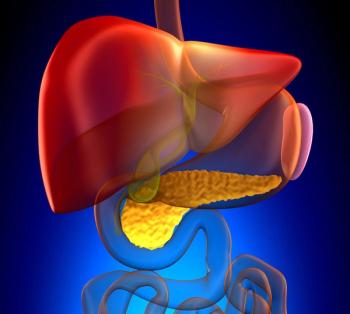
- ONCOLOGY Vol 11 No 7
- Volume 11
- Issue 7
Recent Progress in Radioimmunotherapy for Cancer
The article by Meredith and LoBuglio represents a thorough description of the clinical strategies that have been attempted with radioimmunoconjugates. The authors appropriately point to the extraordinary promise of these agents in the treatment of hematologic malignancies. They also acknowledge the disappointments that have been encountered in the systemic therapy of solid tumors, while noting that there may be some reason for optimism regarding locoregional administration of radioimmunoconjugates.
The article by Meredith and LoBuglio represents a thorough descriptionof the clinical strategies that have been attempted with radioimmunoconjugates.The authors appropriately point to the extraordinary promise of these agentsin the treatment of hematologic malignancies. They also acknowledge thedisappointments that have been encountered in the systemic therapy of solidtumors, while noting that there may be some reason for optimism regardinglocoregional administration of radioimmunoconjugates.
Following a description of the dose-limiting toxicities that have beenachieved or predicted, the authors briefly describe the range of modificationsand adaptations that are under study to improve the potential for therapeuticefficacy. However, some additional points can be addressed.
Hematologic Malignancies
With regard to the use of radioimmunoconjugates in lymphoma, there issound encouragement for pursuing iodine-131-labeled anti-CD20 antibodies.Whether low- or high-dose strategies are used, clear clinical efficacyof these antibodies has been noted in both phase I and phase II trials.However, anti-CD20 antibodies may have immunotherapeutic potential independentof the attached radionuclide, and most of these trials (eg, with the B1antibody) have included loading doses of unlabeled antibody.
It is apparent from studies with other anti-CD20 antibodies (which recognizean alternative epitope) that immunotherapy can be efficacious in treatinglymphoma.[1] An improved understanding of the relative roles of the respectivetherapeutic components is certainly worthy of further investigation andwould help optimize this therapy.
With regard to Hodgkin's disease, the authors point to encouraging clinicalstudies of ytrrium-90-labeled polyclonal antiferritin conducted by Vriesendorpet al.[2] It is important to note that all of the work with single- agentytrrium-90 polyclonal antiferritin in Hodgkin's disease has been conductedin the phase I setting. Phase II trials (including confirmatory trials)are needed to clarify the therapeutic potential of this radioimmunoconjugate.
Studies of radioimmunotherapy for acute myelogenous leukemia at MemorialSloan-Kettering Cancer Center and the Fred Hutchinson Cancer Center arealso extremely promising. The authors appropriately point out that thedose-limiting toxicity of myelosuppression is of less importance in thissetting because of the availability of allogeneic hematopoietic stem-cellrescue techniques. However, it is also important to note that proposedtreatment strategies using humanized M195 conjugated to bismuth-212 orbismuth-213 (alpha-particle emitters with high linear energy transfer)[3]theoretically can cause single cell death, and thus, may avoid bystanderradiotoxicity to normal bone marrow progenitors. This approach would circumventthe need for allogeneic hematopoietic stem-cell transplantation and itsassociated toxicities.
Solid Tumors
Meredith and LoBuglio have done a careful job in outlining the statusof radioimmunotherapy for solid tumors. However, their comments about theantitumor effects observed with monoclonal antibody (MoAb) CC49 may betoo generous. The majority of objective responses seen with iodine-131-MoAbCC49 treatment have occurred in trials that involve multimodality therapy;thus, the contribution of the radiolabeled antibody is unclear and needsfurther study.
This is also true of studies of radiolabeled polyclonal antiferritintherapy for primary liver cancer. A randomized trial conducted by the RadiationTherapy Oncology Group could not confirm a benefit of the addition of theradiolabeled antibody on objective response or survival.[4]
The authors' optimism for the future of radioimmunotherapy using locoregionalroutes of delivery (particularly intraperitoneal routes) seems to be justified.The outlook for intralesional and intra-arterial treatments for centralnervous system tumors is unclear, however. The clinical trials to datethat have reported promising results have compared contemporary data fromselected patients with historical controls. Much work needs to be done.
Future Research Targets
After almost 15 years of earnest and enthusiastic investigation, thetherapeutic role of radioimmunotherapy is about to be defined in the treatmentof lymphoma and, possibly, leukemia. Moreover, investigators now have aclear vision of the impediments to the successful use of this therapy ina broad range of clinical settings.
In describing future areas of research needs, Meredith and LoBuglioappropriately focus on two targets: (1) the nature of the radiolabeledantibody and (2) factors that influence the ability of the radioimmunoconjugateto reach and accumulate in target sites. Available technology has clearlyallowed us to test and evaluate high-affinity antibodies using very stablechelates.[5] New engineered antibodies with low immunogenic potential arepoised to enter clinical trials.[6] However, the success of systemic radioimmunotherapy,at least for solid tumors, will undoubtedly lie in manipulating the hostand/or tumor to improve the access of radioimmunoconjugates to the tumortarget.
References:
1. Maloney DG, Liles TM, Czerwinski DK, et al: Phase I clinical trialusing escalating single dose infusion of chimeric anti-CD20 monoclonalantibody (IDEC-C2B8) in patients with recurrent B-cell lymphoma. Blood84:2457-66, 1994.
2. Vriesendorp HM, Morton JD, Quadri SM: Review of five consecutivestudies of radiolabeled immunoglobulin therapy in Hodgkin's disease. CancerRes 55:5888s-5892s,1995.
3. Scheinberg DA, Jurcic JG, McDevitt M, et al: Antibody targeted highenergy alpha particle therapy: Development and use of a bismuth-213-humanizedanti-CD33 agent. AAAS Proc, February 1997.
4. Order S, Pajak T, Leibel S, et al: A randomized prospective trialcomparing full dose chemotherapy to 131I antiferritin: An RTOG Study. IntJ Radiat Oncol Biol Phys 20:953-63, 1991.
5. Tempero MA, Leichner P, Dalrymple G, et al: High dose therapy with131I labeled monoclonal antibody CC49: A phase I trial. J Clin Oncol, 15:1518-1528,1997.
6. Slavin-Chiorini DC, Schlom J, Shu LM, et al: Biological propertiesof chimeric domain-deleted anticarcinoma immunoglobulins. Cancer Res 55:5957-67,1995.
Articles in this issue
over 23 years ago
Chromosomal Abnormalities Predict Poor Outcome in Multiple Myelomaover 28 years ago
Tumor Board Conference from the University of Pittsburghover 28 years ago
Role of Diet in Cancer Hard to Study, Expert Saysover 28 years ago
Results of Newer Radiation Treatments for Prostate Cancerover 28 years ago
New Evidence That NSAIDs Reduce Breast Cancer Riskover 28 years ago
Book Review: Tamoxifen: A Guide for Clinicians and Patientsover 28 years ago
Pancreatic Cancer Surgical Practice GuidelinesNewsletter
Stay up to date on recent advances in the multidisciplinary approach to cancer.














































































